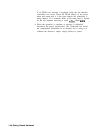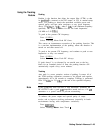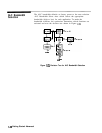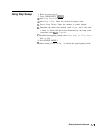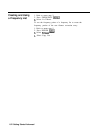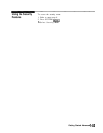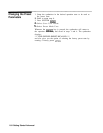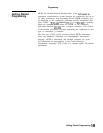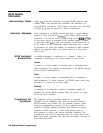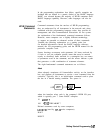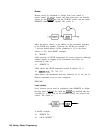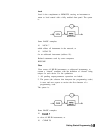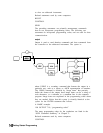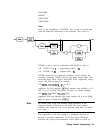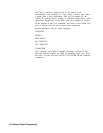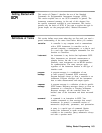
HP-IB General
Information
Interconnecting Cables
Instrument Addresses
HP-IB Instrument
Nomenclature
Programming the
Synthesizer
1-56 Getting Started Programming
Figure
C-2
shows the synthesizer rear-panel HP-IB connector and
suitable cables, and describes the procedures and limitations for
interconnecting instruments. Cable length restrictions, also described
in Figure
C-2, must be observed to prevent transmission.
Each instrument in an HP-IB network must have a unique address,
ranging in value from 00-30(d
ecimal).
The default address for the
synthesizer is 19, but this can be changed using the My adrrs
softkey
or rear panel switch as described in the reference chapter (Chapter
2) under the “8360
Adrs” entry (the examples in this section use 19
as the address for the synthesizer). Other instruments use a variety
of procedures for setting the address, as described in their operating
manuals, but typically either a rear panel switch or a front panel
code is used.
An HP-IB instrument is categorized as a “listener,” “talker,” or
“controller,” depending on its current function in the network.
Listener
A listener is a device capable of receiving data or commands from
other instruments. Any number of instruments in the HP-IB network
can be listeners simultaneously.
Talker
A talker is a device capable of transmitting data or commands to
other instruments. To avoid confusion, an HP-IB system allows only
one device at a time to be an active talker.
Controller
A controller is an instrument, typically a computer, capable of
managing the various HP-IB activities. Only one device at a time
can be an active controller.
The synthesizer can be controlled entirely by a computer
(although the line POWER switch must be operated manually).
Several functions are possible only by computer (remote) control.
Computer programming procedures for the synthesizer involve
selecting an HP-IB command statement, then adding the specific
synthesizer (SCPI, Analyzer, or CIIL) programming codes to
that statement to achieve the desired operating conditions. The
programming codes can be categorized into two groups: Those that
mimic front panel keystrokes; and those that are unique, and have no
front panel equivalent.



